The Queen Elizabeth Class aircraft carriers are the largest surface warships ever constructed for the Royal Navy but many often argue for smaller, cheaper carriers but would this be a good idea? I don’t think so, here’s why.
We’re often asked questions along the lines of “Wouldn’t more, smaller and cheaper carriers be good for the Royal Navy?”, so let’s jump into why I believe they wouldn’t be.
“The reason that we have arrived at what we have arrived at is because to do the initial strike package, that deep strike package, we have done really quite detailed calculations and we have come out with the figure of 36 joint strike fighters, and that is what has driven the size of it, and that is to be able to deliver the weight of effort that you need for these operations that we are planning in the future. That is the thing that has made us arrive at that size of deck and that size of ship, to enable that to happen.
I have talked with the Chief of Naval Operations in America. He is very keen for us to get these because he sees us slotting in with his carrier groups. For example, in Afghanistan last year they had to call on the French to bail them out with their carrier. He really wants us to have these, but he wants us to have same sort of clout as one of their carriers, which is this figure at 36. He would find that very useful, and really we would mix and match with that.”
— Admiral Sir Alan West, evidence to the Select Committee on Defence, 24 November 2004
What does a large carrier offer that a smaller one doesn’t? Operational experience shows that larger carriers have significant advantages. For example, the Invincible class typically hosted around 12 Sea Harriers and with that their decks were fairly crowded. Tabloids often like to quote 12 as the maximum number of F-35B’s the new Queen Elizabeth class will be able to carry, however this is nonsense.
The smaller the carrier, the fewer aircraft it can support and the greater waste of resources it becomes when compared to larger carriers. The smaller the carrier, the more the vessels size restricts the performance of the aircraft onboard. The three Invincible class carriers, which the Queen Elizabeth class will replace, operated small and relatively low performance Sea Harriers. The larger F-35 that will operate from the new carriers is more effective than the Sea Harrier. It carries much more and it flies much faster and much farther. It’s also a more complicated aircraft, requiring more equipment and personnel.
A carrier accommodating as many F-35Bs as the Invincible accommodated Sea Harriers would be far larger by necessity in order to effectively operate the modern, larger aircraft.

The ships former commanding officer, Captain Simon Petitt, rightfully pointed out that there is a lot of symbolism in modern warfare and that having a ship the size of HMS Queen Elizabeth, which will be the navy’s biggest ever, was significant. The sight of a heavily equipped 70,000 tonne carrier, which is almost 300 metres long, heading towards a potential enemy had a deterrent effect that is essential if the UK wants to project influence across the world Petitt claims.
“It is massively visible, you can range back in history and see the value of this. Everything from Nelson deterring Admiral Villeneuve from leaving Cadiz all the way to the big battleships of early 20th century, to what we are doing now.
The Americans use it all the time. We currently haven’t got this level of carrier capability. The bigger the capability the more influence you have to bear.”
So great is the impact of larger vessels as a deterrent, they’re often used as a geopolitical chess piece. American governments have, since the second world war, moved aircraft carriers around to demonstrate American resolve.
The particular benefits of using carriers in this way are that they operate on the high seas, where permission is not needed from other countries. Indeed, since modern US carriers are large and imposing they “show the flag” to great effect due to their sheer size alone. Equally, it is often argued that had the Royal Navy had two full sized carriers in 1982 it is more than possible that Argentina would not have attempted to take the Falklands in the first place.

Larger carriers don’t have to be packed to bursting point with aircraft to achieve their greatest effectiveness, even with fewer aircraft on board, a ship with a large flight deck can rearm and refuel aircraft much more quickly, this is typically why they allow for much higher sortie generation rates than smaller vessels.
The more crowded the flight deck, the slower the turn-around of each aircraft, the lower the sortie generation rate.
Size also offers greater storage capacity, larger vessels do not have to be resupplied as often, impacting both the effectiveness of the carrier and her vulnerability. Because a carrier is more vulnerable when being replenished, the vessel typically withdraws from station for that function. Much of the time lost is the time spent heading away from station and returning. The smaller the carrier, the more time lost and a bigger logistics chain required in support.
A larger ship is likely to survive damage that will sink or disable a smaller one. The smaller the proportion of a ship that gets damaged, the better the chance that the ship can survive the damage and keep on fighting. It takes sheer size to provide enough protection against all the weapons likely to be used against a carrier, from bombs to cruise missiles to torpedoes.
This lesson comes from the second world war, where lessons learned from operations with the large converted battlecruisers in comparison with the smaller purpose-built aircraft carriers had taught both the Royal and US Navies that large carriers were more survivable than smaller ones due primarily to the large number of watertight compartments.
If a complement of aircraft that would typically be found on one large carrier is split among several smaller carriers, then each vessel needs its own escorts unless they operate together. This would require more resources to operate effectively. It might be argued that splitting up a carrier force would make it more difficult for an enemy to deal with all of it at once but the price paid in escorting ships would be high, making it unfeasible for most navies. Indeed, the most significant effect this would have would be requiring more smaller carriers to do the job of one large vessel, further increasing costs. Each of the smaller carriers in the group is less survivable, more wasteful and less effective than a single larger ship.

The Queen Elizabeth class mark a change from expressing carrier power in terms of number of aircraft carried, to the number of sorties that can be generated from the deck. The class are not the largest class of carrier in the world but they are most likely the smallest and least expensive carrier the Royal Navy could build, which still have the advantages that large carriers offer.




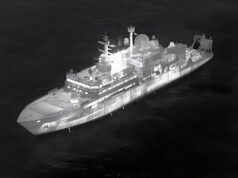
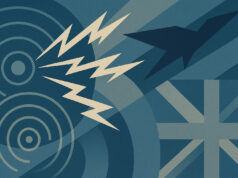
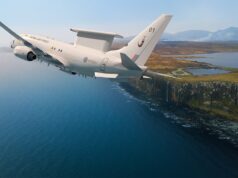
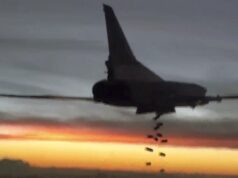
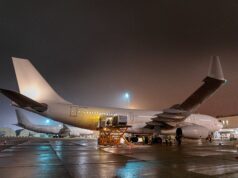

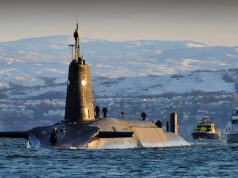
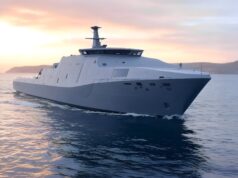


Meanwhile across the pond, the US Navy have added a well deck to their America Class
http://www.thedrive.com/the-war-zone/20201/the-next-america-class-amphibious-assault-ship-will-almost-be-in-a-class-of-its-own
And its almost half the size of the QE class. Also the Yanks appear to place more store in giving these ships the ability to defend themselves.
Meanwhile the Marine Corps have their own plans for a mini carrier based on the America class
http://www.thedrive.com/the-war-zone/8798/heres-the-usmcs-plan-for-lightning-carriers-brimming-with-f-35bs
We’re never going to be the USA. They are such a bigger economy with a bigger population and throw so much more money at this.
What will be interesting is to see…
– how the Italians fare with operating F-35B from Cavour and ultimately Trieste (and also how they get on with a mixed F-35 A and B fleets)
– what decisions the Spanish make about Harrier replacement and Juan Carlos operations.
I think the Australians have already made the decision not to operate F-35B off their Canberra Class haven’t they, or is that still ping-ponging backwards and forwards?
(Chris H) farouk – The author of this piece, Tyler Rogoway, is worth a good read and I included two of his pieces from 2014 and 2015 in my other comment but its disappeared down the Moderation hole, So here is one:
http://foxtrotalpha.jalopnik.com/americas-carrier-gap-crisis-highlights-a-need-for-sma-1740644946
(Chris H) and here is the other. All relevant to the article above and your comment
http://foxtrotalpha.jalopnik.com/why-the-us-navy-should-build-smaller-aircraft-carriers-1600899834
Thanks Chris, interesting reading
The US has super carriers. They can afford to have these smaller carriers in addition for roles that are more suited to small ships.
If you asked them if they could only have large or small then I bet they would choose large every time.
I personally think we should have at least 1 or 2 small carriers in addition to the large ones but we only have so much budget so it is probably unrealistic.
The well deck takes away a lot of the air support capability which the first two America class provided. It reduces the fuel and vehicle storage needed for sustaining air support, as well as reducing the overall strength of the deck. The mini carrier for the USMC was the first two America class without the well decks.
USS America is designed as a LPH. That is it’s role & fixed wing ops are ancilliary. youre quite right that it is far better protected than our QEs will be, with 3-tier AA armament(ESSM/RAM/Phalanx c.f. Phalanx & nothing else on the QEs).
The QEs are primary strike/air defence carriers who would be extremely risky & foolish to park close to a landing shore. They are the size they are to sufficiently support the aircraft complement they’re designed for & putting a well-deck/dock in would saceifice space needed & reduce effective air operations. The cost of doing such a conversion may not be any less than building a new LPH, the latter being the blindingly obvious logical solution.
Our forces have been cut beyond any sense. Wes hould recognise that the best troops we have are the Paras & Marines who should be kept & the amphibious vessels that enable the marines kept at no weaker level, preferably urgenty replacing Ocean with a new LPH.
The America Class aviation centric units -America and Tripoli are almost identical in dimensions (and appearance) to WWII Lexington Class Short Hull Fleet Carriers – 855 feet give or take – but MUCH heavier then their predecessor’s 25,000 tons. The Marines were the service which pushed for restoration of a welldeck on the next unit – Bougainville LHA 8 – so they would have the flexibility to assault either sea or air.
https://www.history.navy.mil/content/dam/nhhc/news-and-events/multimedia%20gallery/New%20Infographics/FINAL%20NOV%202016%20lowres%20PDF%20Infograph%2020×30%20USS%20Bougainville%20LHA%208.pdf
It’s pretty obvious these ships are going to have a secondary sea control mission with an embarked F35 airgroup of ~ 20 jets along with CV22’s and Maritime Strike helos. As well as the aforementioned use as Marine CAS mini carriers. They are going to be gamechangers. The USN us also looking at light carrier designs in the 65 – 70,000 ton range similar in dimensions to the old Midway Class CV’s
https://www.midway.org/
Cheers!
Very
The America Class aviation centric units -America and Tripoli are almost identical in dimensions (and appearance) to WWII Lexington Class Short Hull Fleet Carriers – 855 feet give or take – but MUCH heavier then their predecessor’s 25,000 tons. The Marines were the service which pushed for restoration of a welldeck on the next unit – Bougainville LHA 8 – so they would have the flexibility to assault either sea or air.
https://www.history.navy.mil/content/dam/nhhc/news-and-events/multimedia%20gallery/New%20Infographics/FINAL%20NOV%202016%20lowres%20PDF%20Infograph%2020×30%20USS%20Bougainville%20LHA%208.pdf
It’s pretty obvious these ships are going to have a secondary sea control mission with an embarked F35 airgroup of ~ 20 jets along with CV22’s and Maritime Strike helos. As well as the aforementioned use as Marine CAS mini carriers. They are going to be gamechangers. The USN us also looking at light carrier designs in the 65 – 70,000 ton range similar in dimensions to the old Midway Class CV’s. Darn ModerationBot!
Cheers!
https://www.midway.org/
https://www.history.navy.mil/content/dam/nhhc/news-and-events/multimedia%20gallery/New%20Infographics/FINAL%20NOV%202016%20lowres%20PDF%20Infograph%2020×30%20USS%20Bougainville%20LHA%208.pdf
I am not aware of any desire to build smaller carriers here in the UK. Possibly more of the same as I am pretty sure we have the optimal size for our needs and priorities. And (contrary to what others keep saying). I am also pretty sure we have found an excellent way to deliver 5th Gen strike capability off a large platform (a QE is some 130 feet shorter in the bow than a Nimitz) at a very low comparative cost without the need for nuclear power or CATOBAR.
However there has been and continues to be a debate in the USA about the outrageous costs of their new carriers (Ford Class). The first cost $16 Bn and the second is estimated to cost $12.5 Bn. And they are planning 11 of them…. $28 Bn for two – we could deliver 5 QEs and change!
I have offered these to the site for discussion as I think they are worth a detailed read by anyone interested in carriers and their future. Basically the argument is for the USA to stop the ‘1 for 1’ replacement of Nimitz carriers and replace some Nimitz with Ford Class but replace the rest on a ‘2 for 1’ with QE type of carriers (with CATOBAR)
http://foxtrotalpha.jalopnik.com/why-the-us-navy-should-build-smaller-aircraft-carriers-1600899834
http://foxtrotalpha.jalopnik.com/americas-carrier-gap-crisis-highlights-a-need-for-sma-1740644946
(Chris H) Damn – In my comment I included two links and so it has gone for moderation never to be seen again …
And yet no moderation for racist or defamatory comments.
The world has gone mad.
[…] post Why smaller carriers would be bad idea for the Royal Navy appeared first on UK Defence […]
Not that it matters after the fact, but no, smaller makes no sense.
As the adage goes: “air is free and steel is cheap”.
Making a carrier say, 1/3rd smaller doesn’t necessarily make it proportionately cheaper to build or run and it significantly deteriorates strike effectiveness.
you really are a oxygen thief. I see your poisonous postings across this site, I really am surprised your reply’s are allowed.
Apart from many reasons already outlined is the fact this is what we have, they are paid for, magnificent, highly capable vessels and the UK now needs to make the most of a capability few nations can match, rather than bemoaning what we could have got or should have got.
A carrier air wing of around 24 F35B with a dozen Merlin for ASW and ASCS, with smaller numbers of Wildcat and Chinook, plus an escort of T45, T26, Astute, FSS and Tide, enables the RN to retain its place as one of the premier navies of the world and the United Kingdom as a maritime nation.
As a permanent member of the UN we cannot afford to become a military nonentity, as the treasury seems intent on..
‘The paedophile infested BBC’…
I reckon that comment’s unlawful and the moderator ought to report you TH, or at least consider blocking you from this site
TH your getting worse. This vitriolic rubbish you spout is getting beyond a joke.
The bbc is without doubt left wing supporting !! But infested with pedos behave it’s pathetic talk .. And Lord West many time talked crap.
pointless discussion especially given the sale of ocean. the navy needs a hlp. ocean could have been fitted to take the f35, if any of the muddle headed dolts at the .o.d HAD EVER LOOKED BEYOND THE END OF THEIR NOSES, then they already had them, illustrious could have gone on for longer service. ark royal was retired 5 years early. indeed during the ocean refit, illustrious operated in the same role.
Got any actual evidence for that “true statement” TH?
Looks like the heat is affecting judgement, including the understanding of the legal system.
PS website owners
GDPR isn’t far away, comments like the above not only have potential consequences for those that say them but for those that knowingly host them.
There are also big economies of scale with larger Carriers. There are a number of big ticket fixed cost items the price of which remain broadly the same no matter the size of the ship-e.g propulsion,Command,Weaponry,Radar etc.. Put simply a 35 000 ton vessel will not cost half that of a 70 000 tonner.
With two CVs, availability issue is still there though…
How so?
Rule of three,one active,one in refit and one working up.Its much worse than this though,because history shows us that the air group, crew ,spares etc will be run down to effectively support only one. Sink one(possibly in harbour)attrition of the air group or just choose the right moment when no carrier is operational and all that effort is for nothing.
Our enemies are not impressed by size alone any more than we are.This is an extremely weak argument constantly used to try and justify these white elephants. Imagine the loss of prestige when we lose one.
Agree with the rule of three, however, our budget and manpower couldn’t stretch to three with today’s military finances. The large size of the deck does outweigh the the cheaper smaller carriers as it allows greater flexibility over the type of aircraft it can operate. Also it allows for future growth and developing capabilities. Who thought back in the day that the Invincible class would make a decent joint operations helicopter carrier fielding both Apaches and Chinooks along with the standard Sea Kings and Merlins. Having the larger ship generates future possibilities that someone will be thinking, I wonder if this would work?
It’s a no brainier. You square the area of the ship but you cube it’s volume. So bigger ships will always carry more for less money. That’s why container ships and oil tankers keep getting bigger.
It’s not the fact it’s big that acts as a deterrent, it’s the degree of violence it can inflict. It is more of a deterrent because it can provide a much more capable airwing. The stuff about its scale being a symbol is nonsense and in no way justifies the investment. I also find the notion it is highly visible rediculous for a vessel that will ideally remain hidden from enemy counter measures. I know we must cooperate with allies to achieve our common objectives but west arguing we need these cos the USN wants us to have them is hilarious… Why don’t they pay for it then. We’re building them to make a meaningful contribution to collective defence and security not because the yanks say so.
The bigger they are the more capable they are. End of.
Wonder if the UK’s F35B’s will carry this?
http://nationalinterest.org/blog/the-buzz/the-navys-f-35-has-new-weapon-strike-deep-enemy-territory-25433?utm_source=Sailthru&utm_medium=email&utm_campaign=EBB%204.18.18&utm_term=Editorial%20-%20Military%20-%20Early%20Bird%20Brief
Cheers!
Interesting. UK F-35Bs are currently planned to carry Spear 3, a 220lb turbjet mini cruise missile with a range 80 miles. Four missiles will fit in each internal weapons bay of the F-35B. Spear 3 seems to be a kind of longer range subsonic Brimstone. If a larger warhead is needed we would have to use Storm Shadow – more of a jassm long range missile with a bunker busting warhead. But as I understand things there are no plans to integrate Storm Shadow onto F-35B.
http://www.janes360.com/images/assets/853/47853/the_UK_s_SPEAR_Cap_3_air-to-surface_weapon.pdf
Storm Shadow is too long to fit in the F35B’s bomb bay. However it could be fitted to the inner wing pylons. But that’s not very stealthy. I’m sure it will be integrated at a later date.
Size issue right?
Cheers!
The argument over size only works, if we order sufficient f35b to utilise it. Currently it is looking insanely unlikely that a strike package of 36 will ever be achieved in practice. It’s like justifying that you brought a sports car because you had done the maths and a top speed of 200mph was needed and then you live in the UK where max you can do is 70.
They were designed as a trophy by Brown/Blair to boost their ego and standing. The world’s economy then crashed and so did the navy and air force and now in 2018 they make no sense and are too big when considered against the other priorities for military spending.
However, they are what they are. We now need to invest in making sure we don’t operate them, as if they were half the size, and waste the huge investment.
We need to be celebrating the QE class carrier. They are without any doubt the best and most effective carrier design for less than £5 billion each.
The Russian/ Chinese Kuznetsov derivatives are all pants compared to QE. I would loved to have seen her with cats and traps but as she is with 5th generation stealth jump jets that will be just fine.
Just need to get enough escorts and subs to protect her now and we are really going places.
Great ship, they represent the best of British ingenuity and engineering.
Well said Mr Bell.
36 F35bs is the number above,so it’s too big.
TH hope you can back that up with the Police assuming you’ve informed them as any good citizen should.
I love it when people don’t see the bigger picture. I used to be all for the small carrier, or at least to supplement a larger carrier force. The only navy i think who it would be useful for is the US navy, yes the costs of operating a small carrier half the size of say a nimitz is never going to be 50% of the cost, but its not about cost, its about capability. If the US decided to have 6 Nimitz carriers instead of 11 and could build 3 smaller carriers for the price of 1 nimitz, as far as capability goes it would be a massive increase. 21 carriers in total, 6 big sticks and 15 medium sticks… yes operating costs would be more but my god the capability would be immense. And a capability only the US could afford.
Anyway, back to reality. I’m glad the QE are so big, even if we only ever field 24 F35B on them… because these ships are not built for peace, there built for war, and if war came we could fill them to the brim. We couldn’t do that if we only ever built a carrier capable of fielding 24. Granted we have to have the aircraft to fill them with, but that’s when its always good to be friends with the US marines who also operate the F35B.
Just to note… the QE are actually capable of carrying a lot more than the stated 40 aircraft, you could fit a combined air wing of up to 60 aircraft on them in times of war
who else thinks queen Elisabeth looks like a cotton bud thay should have named the ship some thing scery like sami timms is ithe best gurr
who else thinks the queen looks like a cotton bud, they should re name the ship something else like sami is the best rah. also the eurofighter look like a catfish or an Italian.
[…] forum recently published an article explaining ‘Why smaller carriers would be bad idea for the Royal Navy‘. The arguments in favour of large aircraft carriers are strong and convincing – but they […]